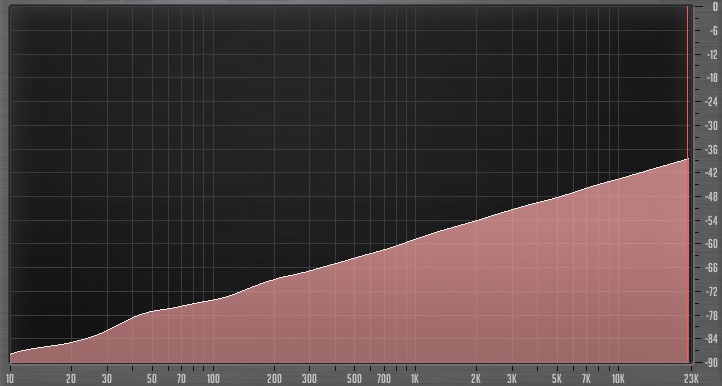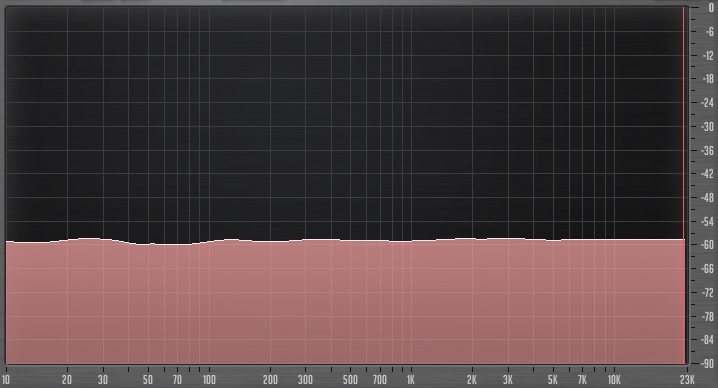EQ Latest... Hi Peeps (you know who you are...)
I've been playing more with SPAN. I am even more familiar now with how this works, including the "edit" controls. I almost understand the Correlation Meter, although I need to learn more about "phase."
I have also splashed out on Pro-Q 2. Because I've got a few FabFilter plug-ins now, it "only" cost me £50. And Pro-Q 2 allows you to adjust the "Tilt" (as "slope" is referred to in Pro-Q2) of the spectrum display (0, 1.5, 3.0, 4.5 and 6.0 dB/Octave).
Since reading through Dave's article on Spectral Dynamics I've been trying many things.
"White Noise" and "Pink Noise" is mentioned in that article, both of which I am familiar with through using those waveforms in sound synthesis. What I wasn't fully aware of, until now, is the frequencies that make up white noise.
Yes, I know it's supposed to be made up of all frequencies...
But I've always "perceived" white noise as a hiss, which is why it is used to emulate hi-hats and cymbals.
Anyway, I have a Sonar project called "EQ_Study," which contains some commercial reference tracks and I have just added a soft synth so that I can create some white and pink noise.
I then put that white noise through SPAN and at first I got this:-

This is because the current slope setting for SPAN is 4.5 degrees.
If I set the slope to zero degrees I get this:-

So, it can now be seen that the white noise signal going through SPAN has equal "energy levels" (dB) through the frequency spectrum.
But I still "perceive" the signal as a hiss, and yet the spectrum analyser is telling me that there are "sounds" at every frequency, from sub 10 Hz to beyond 20 kHz. I can't hear anything much below 100 Hz, and I experimented by adding in Pro-Q 2 a Low Cut band, with a steep 96 dB/octave slope and swept it along the frequency range.
Realisation dawns... I've been reading a lot about this over the last couple of days, but this kind of hammers it home for me... The lower the frequency, the more energy is required for it to register with our ears.
Amazing!
It's so much more fun being a noob